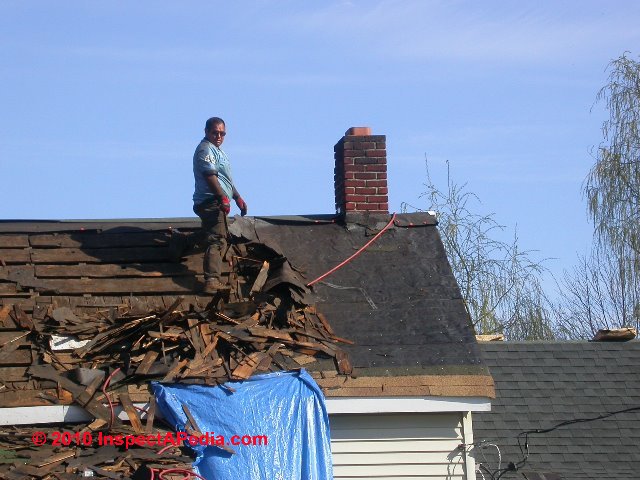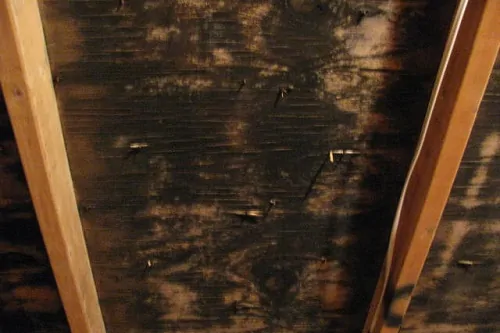The photo at page top shows white attic mold on the roof sheathing and rafters and some brown or black mold on the attic side of ceiling drywall where we pulled back insulation.
Black mold on roof rafters.
Black mold in attic.
Black mold can also grow behind the walls or attic ceilings completely undetected until the occupants smell the presence or experience health problems.
The roof has baffles at alternating thusses soffit and ridge vents.
The black growth on attic sheathing and rafters consists primarily of species of cladosporium alternaria or other genera of micro fungi but rarely if ever the potentially toxic stachybotrys mold black mold because attics are not consistently wet enough to sustain this kind of mold.
Skips a few trusses and reappears on the next panel or two.
The mold itself may have a cottony texture but can also be velvety leathery or.
Leaks in the roof may also cause black mold in the attic.
Attic mold left unchecked can grow and lead to structural deterioration of attic sheathing and roof structural elements.
There s an underlying moisture issue that needs to be resolved because mold requires moisture to grow and spread.
In the attic photograph at left we show a mix of green gray and white attic mold.
Poorly maintained roof gutters and eaves may lead to water seepage under and between slats.
Mold usually causes a musty odor and may cause staining that may be black brown gray white yellow or green.
This causes condensation to form on the cold surfaces in the attic especially roof rafters sheathing and trusses.
At the south end of the roof the ridge changes direction causing an overlay condition.
Not only can this cause black mold to grow on the inside it may also cause damage to the outside of the home as well.
Attic mold is often caused by warm moist air from the house leaking into the attic space.
A 10 x 10 area of plywood has been removed to provide air into this area.










